Land Rover Range Rover vs Tesla Model Y – Which one offers the better deal?
Everyday use, family trips or long-distance drives – here’s where the differences show.
Discover whether Land Rover Range Rover or Tesla Model Y fits your lifestyle better.
Costs and Efficiency:
When it comes to price and running costs, the biggest differences usually appear. This is often where you see which car fits your budget better in the long run.
Tesla Model Y has a significantly advantage in terms of price – it starts at 38600 £, while the Land Rover Range Rover costs 122700 £. That’s a price difference of around 84180 £.
As for range, the Tesla Model Y performs clearly better – achieving up to 622 km, about 505 km more than the Land Rover Range Rover.
Engine and Performance:
Under the bonnet, it becomes clear which model is tuned for sportiness and which one takes the lead when you hit the accelerator.
When it comes to engine power, the Tesla Model Y has a hardly perceptible edge – offering 627 HP compared to 615 HP. That’s roughly 12 HP more horsepower.
In acceleration from 0 to 100 km/h, the Tesla Model Y is clearly perceptible quicker – completing the sprint in 3.50 s, while the Land Rover Range Rover takes 4.50 s. That’s about 1 s faster.
In terms of top speed, the Land Rover Range Rover performs barely noticeable better – reaching 261 km/h, while the Tesla Model Y tops out at 250 km/h. The difference is around 11 km/h.
There’s also a difference in torque: Land Rover Range Rover pulls distinct stronger with 800 Nm compared to 493 Nm. That’s about 307 Nm difference.
Space and Everyday Use:
Beyond pure performance, interior space and usability matter most in daily life. This is where you see which car is more practical and versatile.
Seats: Land Rover Range Rover offers distinct more seating capacity – 7 vs 5.
In curb weight, Tesla Model Y is evident lighter – 1976 kg compared to 2504 kg. The difference is around 528 kg.
In terms of boot space, the Tesla Model Y offers minimal more room – 822 L compared to 818 L. That’s a difference of about 4 L.
In maximum load capacity, the Land Rover Range Rover performs minimal better – up to 2176 L, which is about 154 L more than the Tesla Model Y.
When it comes to payload, Land Rover Range Rover significantly takes the win – 846 kg compared to 472 kg. That’s a difference of about 374 kg.
Who wins the race?
The Tesla Model Y proves to be dominates this comparison and therefore becomes our DriveDuel Champion!
Tesla Model Y is the better all-rounder in this comparison.
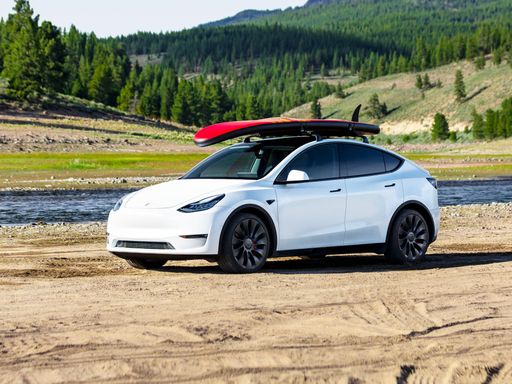
Tesla Model Y
Land Rover Range Rover
The Land Rover Range Rover epitomises luxury and capability in the realms of off-road vehicles. Its elegant design seamlessly marries sophistication with ruggedness, making it equally suitable for urban environments and challenging terrains. Inside, passengers are treated to a plush interior with premium materials and cutting-edge technology that ensure a comfortable and connected driving experience.
details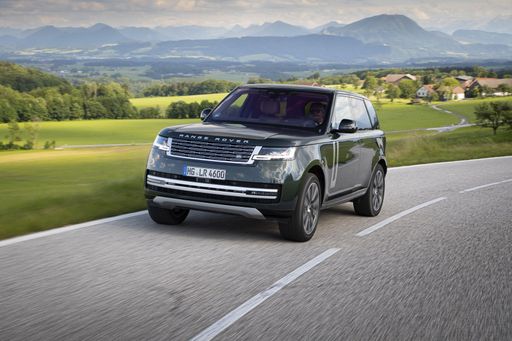 @ media.landrover.com
@ media.landrover.com
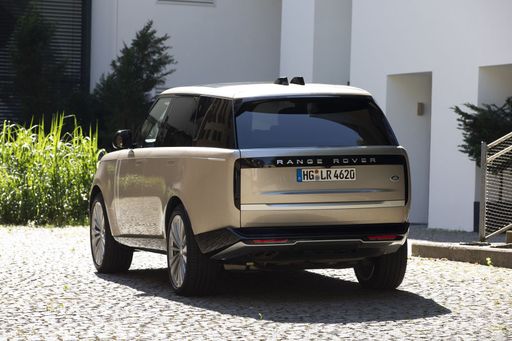 @ media.landrover.com
@ media.landrover.com
 @ media.landrover.com
@ media.landrover.com
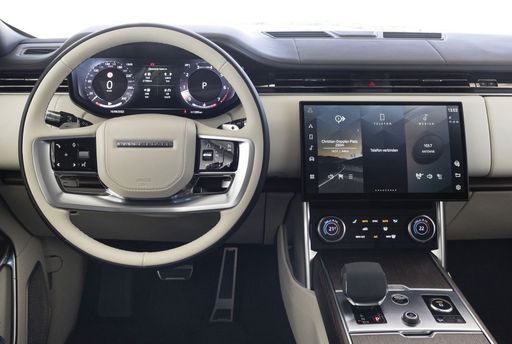 @ media.landrover.com
@ media.landrover.com
Tesla Model Y
The Tesla Model Y stands out in the electric vehicle market with its sleek design and impressive range. Its interior is minimalist yet stylish, offering a spacious cabin that enhances the driving experience. The Model Y also features advanced technology, including an intuitive infotainment system, making it a leader in innovative motoring.
details @ tesla.com
@ tesla.com
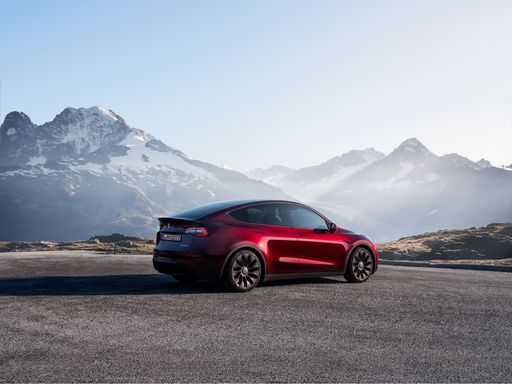 @ tesla.com
@ tesla.com
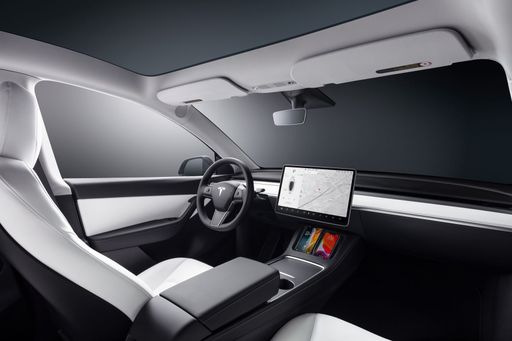 @ tesla.com
@ tesla.com
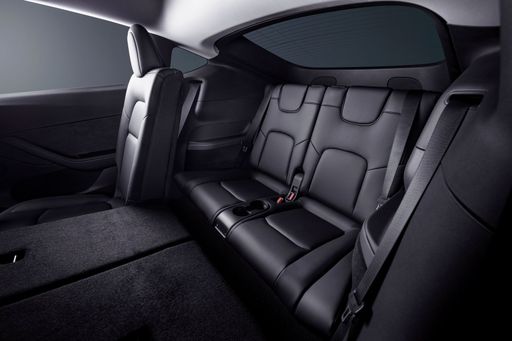 @ tesla.com
@ tesla.com

|

|
|
|
|
Costs and Consumption |
|
|---|---|
|
Price
122700 - 244700 £
|
Price
38600 - 53100 £
|
|
Consumption L/100km
2.7 - 11.7 L
|
Consumption L/100km
-
|
|
Consumption kWh/100km
-
|
Consumption kWh/100km
13.9 - 16.2 kWh
|
|
Electric Range
116 - 117 km
|
Electric Range
500 - 622 km
|
|
Battery Capacity
31.80 kWh
|
Battery Capacity
64.5 - 85 kWh
|
|
co2
62 - 265 g/km
|
co2
0 g/km
|
|
Fuel tank capacity
71 - 90 L
|
Fuel tank capacity
-
|
Dimensions and Body |
|
|---|---|
|
Body Type
Off-Roader
|
Body Type
SUV
|
|
Seats
5 - 7
|
Seats
5
|
|
Doors
5
|
Doors
5
|
|
Curb weight
2504 - 2810 kg
|
Curb weight
1976 - 2108 kg
|
|
Trunk capacity
212 - 818 L
|
Trunk capacity
822 L
|
|
Length
5052 - 5258 mm
|
Length
4790 - 4796 mm
|
|
Width
2047 mm
|
Width
1921 mm
|
|
Height
1870 mm
|
Height
1611 - 1624 mm
|
|
Max trunk capacity
1841 - 2176 L
|
Max trunk capacity
2022 L
|
|
Payload
589 - 846 kg
|
Payload
418 - 472 kg
|
Engine and Performance |
|
|---|---|
|
Engine Type
Plugin Hybrid, Petrol MHEV, Diesel MHEV
|
Engine Type
Electric
|
|
Transmission
Automatic
|
Transmission
Automatic
|
|
Transmission Detail
Automatic Gearbox
|
Transmission Detail
Reduction Gearbox
|
|
Drive Type
All-Wheel Drive
|
Drive Type
Rear-Wheel Drive, All-Wheel Drive
|
|
Power HP
300 - 615 HP
|
Power HP
299 - 627 HP
|
|
Acceleration 0-100km/h
4.5 - 6.6 s
|
Acceleration 0-100km/h
3.5 - 5.9 s
|
|
Max Speed
218 - 261 km/h
|
Max Speed
201 - 250 km/h
|
|
Torque
650 - 800 Nm
|
Torque
420 - 493 Nm
|
|
Number of Cylinders
6 - 8
|
Number of Cylinders
-
|
|
Power kW
221 - 452 kW
|
Power kW
220 - 461 kW
|
|
Engine capacity
2997 - 4395 cm3
|
Engine capacity
-
|
General |
|
|---|---|
|
Model Year
2025
|
Model Year
2025
|
|
CO2 Efficiency Class
B, G
|
CO2 Efficiency Class
A
|
|
Brand
Land Rover
|
Brand
Tesla
|
What drive types are available for the Land Rover Range Rover?
Available configurations include All-Wheel Drive.
The prices and data displayed are estimates based on German list prices and may vary by country. This information is not legally binding.
